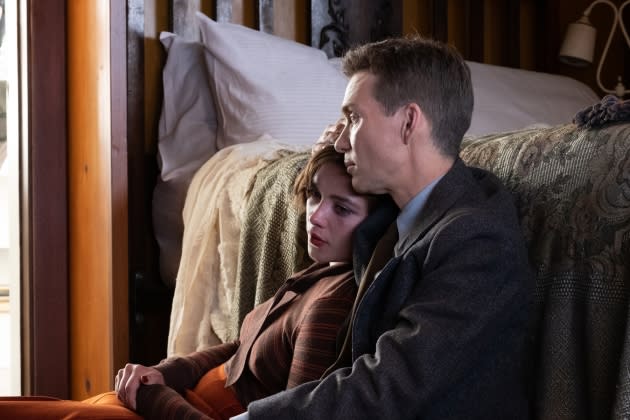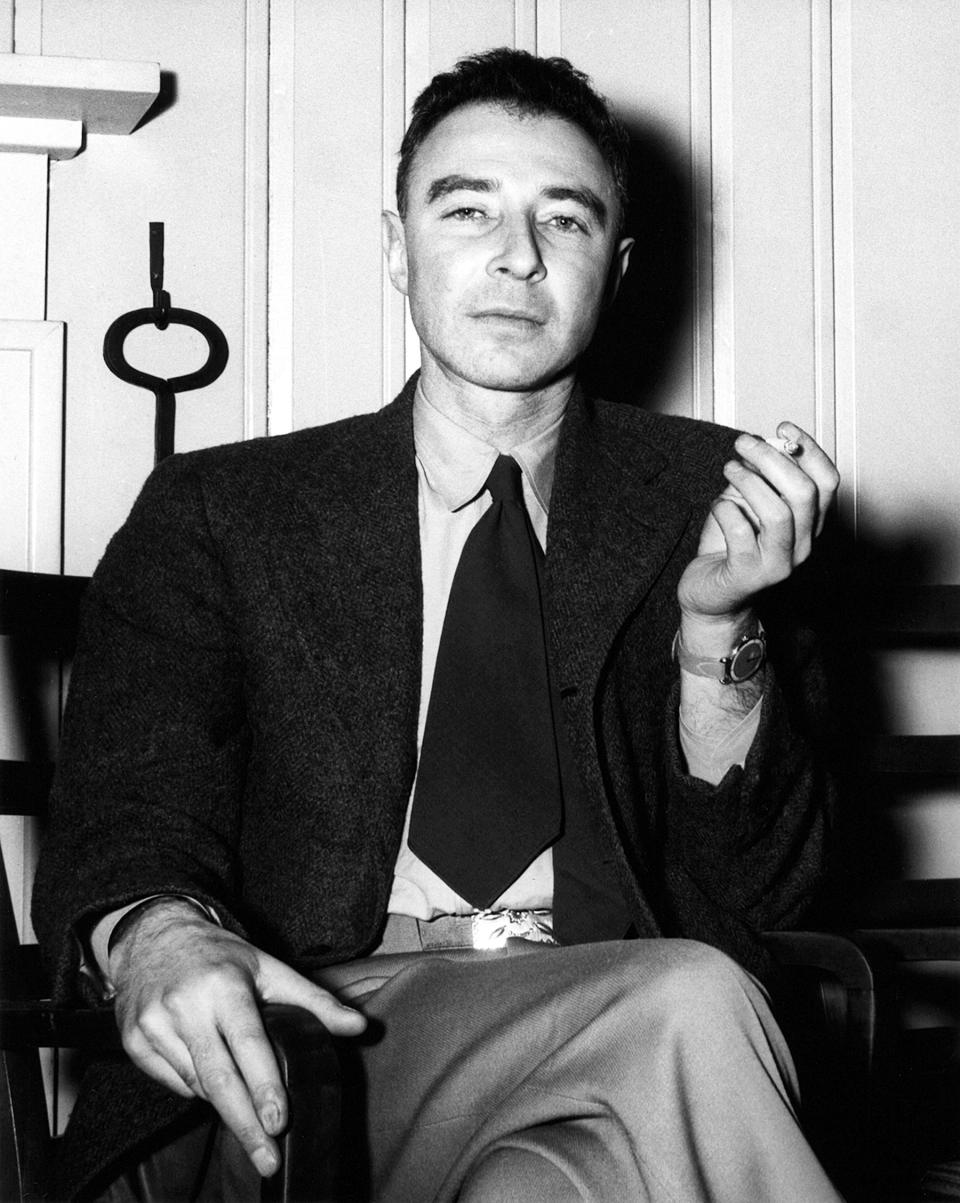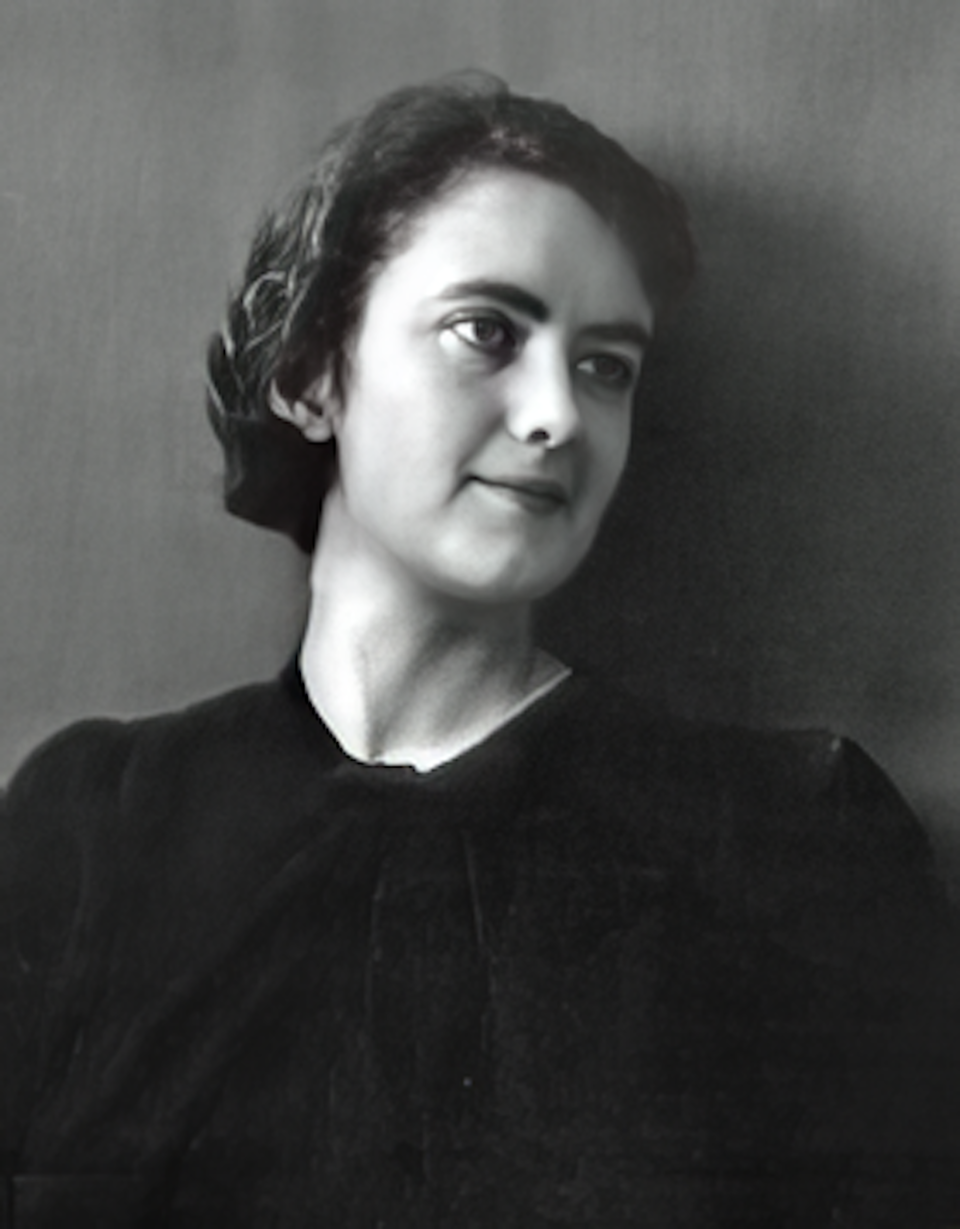We Need to Talk About Those ‘Oppenheimer’ Sex Scenes
- Oops!Something went wrong.Please try again later.
- Oops!Something went wrong.Please try again later.
- Oops!Something went wrong.Please try again later.

The best-laid plans of mice and men often go awry, and two films explore that abiding Robert Burns proverb this week: Oppenheimer, Christopher Nolan’s IMAX-sized three-hour biopic of the “father of the atomic bomb,” and Barbie, a Mattel-sanctioned deconstruction of the patriarchy from the fertile mind of Greta Gerwig. Only one of these summer blockbusters, however, boasts a number of sex scenes, and it isn’t the one starring Margot Robbie and Ryan Gosling.
Oppenheimer explores the life and times of renowned theoretical physicist J. Robert Oppenheimer (embodied by an admirably committed Cillian Murphy) through the twin prisms of his time as de facto leader of the Manhattan Project in Los Alamos, New Mexico, as the U.S. and its team of scientific avengers raced to create the first atomic bomb before the Nazis; and his 1954 security clearance hearings, where Congress sought to paint their erstwhile savior as a commie governed by anti-American hostilities and wanton sexual desire (ugly stereotypes all-too-commonly foisted on American Jews like Oppenheimer). There is also a black-and-white 1959 congressional hearing on the cabinet nomination of Lewis Strauss (Robert Downey Jr., never better), chairman of the Atomic Energy Commission and a supposed friend of Oppenheimer’s, though the less said about this prolonged deviation the better.
More from Rolling Stone
How 'Boy Meets World' Star Maitland Ward Found Her Sexuality in Porn
The 'Barbie' and 'Oppenheimer' Double Feature Left Me Questioning Reality Itself
We are treated to glimpses of Oppenheimer’s years teaching in the physics department at UC Berkeley, where he and his students made a number of valuable advances in the realms of quantum chemistry and molecular physics, and nuclear reactions in particular. This is where Oppenheimer, an attractive, slender man with piercing blue eyes, met Jean Tatlock (played by Florence Pugh), a young Stanford Medical School student and Communist Party member who wrote and reported for the Western Worker, a communist newspaper. Tatlock helped fuel Oppenheimer’s — or Oppie, as she would call him — interest in the field of psychology, as well as radical left-wing politics, and their passionate romance would eventually attract the interest of the FBI.
Early on in Oppenheimer, Professor Oppenheimer is introduced to Tatlock during a Communist Party get-together, and the two immediately click. Cut to a scene of a nude Pugh-as-Tatlock riding Murphy’s Oppie like the end of Dr. Strangelove, only to pause in the action when her eye catches a book on his shelf: the Bhagavad Gita, a Hindu scripture that was a favorite of Oppenheimer’s. She turns to a section and, as she is on top of him, has him read it to her: “Now I am become Death, the destroyer of worlds” — a line famously uttered by Oppenheimer about him and his terrifying creation during a 1965 TV broadcast. In lieu of capturing the intensity of Oppenheimer and Tatlock’s affair, it comes off as clumsy and unintentionally funny. Why is Tatlock making Oppenheimer read one of his most famous quotes back to her while fucking him?
Now, it is the first sex scene that Nolan has ever filmed, after all — Oppenheimer is the first Nolan flick to attract an R rating since 2002’s Insomnia due to its sex scenes — so perhaps we should cut him a bit of slack. I mean, who can forget Spielberg’s supercharged sex scene in 2006’s Munich, a baffling mélange of sweat, thrashing, terror, and climax-as-exorcism, set to a religious hymn and intercut with scenes of Israelis being gunned down during the Munich massacre at the 1972 Summer Olympics by Palestinian militants. Shooting a good sex scene is a gift that can escape even some of our greatest filmmakers. Not everyone can be Nicolas Roeg. And Nolan appears well-aware of this.
“Any time you’re challenging yourself to work in areas you haven’t worked in before, you should be appropriately nervous and appropriately careful and planned and prepared,” Nolan told Insider about filming his first sex scenes.
He added, “When you look at Oppenheimer’s life and you look at his story, that aspect of his life, the aspect of his sexuality, his way with women, the charm that he exuded, it’s an essential part of his story… It felt very important to try to understand their relationship and to really see inside it and understand what made it tick without being coy or allusive about it — but to try to be intimate, to try and be in there with him and fully understand the relationship that was so important to him.”

Indeed, Oppenheimer was quite the ladies’ man. In addition to his romance with Tatlock, which is said to have lasted well into his marriage to Kitty (Emily Blunt), the film implies that he’d conducted an affair with Ruth Sherman Tolman (Louise Lombard), the wife of Oppenheimer’s pal Richard Tolman, a physicist who served as scientific advisor to Major General Leslie Groves (Matt Damon) in the Manhattan Project. Their alleged affair is explored more in-depth in the 2013 book An Atomic Love Story: The Extraordinary Women in Robert Oppenheimer’s Life.
“Robert was seen dating a number of ‘mostly very attractive youngish girls,’” during his time at Berkeley, according to the Pulitzer Prize-winning 2005 biography American Prometheus: The Triumph and Tragedy of J. Robert Oppenheimer, upon which Nolan’s film is based. “Among others, he had relationships with Haakon Chevalier’s sister-in-law, Ann Hoffman, and Estelle Caen, the sister of the San Francisco Chronicle’s columnist Herbert Caen. Bob Serber recalled a half-dozen girlfriends, including a British emigré named Sandra Dyer-Bennett. He broke several hearts. Still, whenever Tatlock phoned him in a low mood, he came to her and talked her out of her depression. They remained the closest of friends, and occasional lovers.”
After Tatlock broke things off with Oppenheimer, who’d proposed marriage to her at least twice, he met Kitty Harrison (née Peuning), who was married at the time to Stewart Harrison, a doctor. He rekindled his romance with Tatlock while married to Kitty, though refused to say goodbye to Tatlock before departing for Los Alamos.
In 1943, on a visit to Berkeley in the midst of the Manhattan Project, Oppenheimer reunited with Tatlock – even though she was seeing his friend, a psychologist named Dr. Siegfried Bernfeld. He was monitored by agents of the military during their entire rendezvous, who later reported their findings to the FBI. According to American Prometheus, those findings were that: “‘On June 14, 1943, Oppenheimer traveled via Key Railway from Berkeley to San Francisco… where he was met by Jean Tatlock who kissed him.’” The two went out for dinner and drinks, and then to Tatlock’s apartment, where Oppenheimer wouldn’t emerge until 8:30 a.m. the next morning, and the FBI report noted that “the relationship of Oppenheimer and Tatlock appears to be very affectionate and intimate.”
As far as we know, he never saw her again after San Francisco.

Aside from this clandestine rendezvous, Pugh’s Tatlock disappears for much of Oppenheimer — save a scene during Oppenheimer’s 1954 security clearance hearings that has to be seen to be believed. Oppenheimer is being grilled by seedy congressmen over his allegiances, with the blowhards repeatedly claiming that Oppenheimer’s affair with the communist Tatlock during his marriage to Kitty, and his association with her communist friends, confirmed that his loyalty to America was precarious at best.
Blunt’s Kitty is in the room as Murphy’s Oppenheimer is being interrogated by these congressmen over Tatlock and we switch to her perspective, as she envisions Oppenheimer and Tatlock — naked — having sex right in front of her, in that very room, with Pugh’s nude Tatlock grinding on Oppie’s lap. Tatlock locks eyes with Kitty in this fantasy scenario, taunting her. You get what Nolan is attempting here — to convey Kitty’s jealousy over her husband’s extramarital tryst — but the scene is so wildly over-the-top that your eyes will roll back into your head.
There is much to admire in Nolan’s Oppenheimer. It is a staggering technical achievement, its score by Ludwig Göransson is dizzyingly alive, the compositions by Hoyte van Hoytema deserve to be taken in on the biggest screen possible, and its performances are stellar across the board (save Josh Hartnett and Benny Safdie’s distracting turns). The film is brimming with ambition, but its sex scenes — and the portrait of Oppenheimer and Tatlock’s relationship as a whole — could have used some work.
Tatlock, by then a doctor whose star was on the rise, took her own life in 1944. She had battled crippling bouts of depression. The name of the first nuclear test, “Trinity,” was reportedly made in tribute to her. It is a reference to a poem by the poet John Donne, whose work Tatlock had introduced to Oppie.
Best of Rolling Stone

